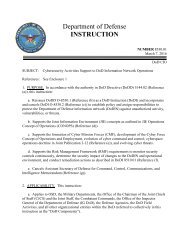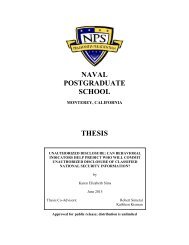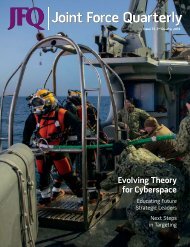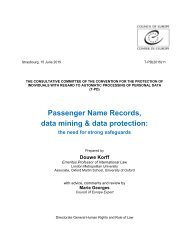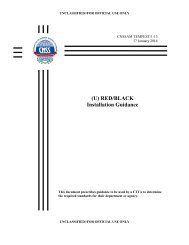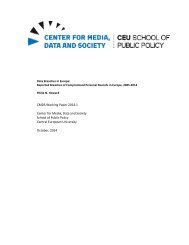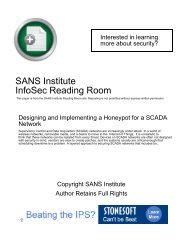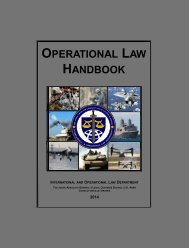SCHOOL THESIS
?view&did=788526
?view&did=788526
Create successful ePaper yourself
Turn your PDF publications into a flip-book with our unique Google optimized e-Paper software.
For example, Stavridis outlines the 2012 “Shamoon” virus that infected Saudi<br />
Aramco, the world’s largest State-owned oil company. This cyber operation erased data<br />
from computer memories which the company could not reconstitute. Also, company<br />
systems were down for two weeks, resulting in adverse global economic affects. Finally,<br />
more than 30,000 workstations were replaced to rid the corporation network of malware.<br />
This action “is a far better measure of cyberforce than simply concentrated personal<br />
injury or physical damage. Yet, according to the Tallinn Manual, Shamoon was not a<br />
cyber attack.” 49<br />
Therefore, Stavridis offers his own alternative definition:<br />
A cyber attack is the deliberate projection of cyberforce resulting in<br />
kinetic or nonkinetic consequences that threaten or otherwise destabilize<br />
national security, harm economic interests, create political or cultural<br />
instability; or hurt individuals, devices or systems. 50<br />
This may become a more useful definition for future military planners, as it<br />
broadens threats from cyberspace operations to include those actions which inflict<br />
economic harm or national security instability.<br />
4. Military Cyberspace Definitions<br />
Finally, from a Department of Defense (DOD) perspective, military cyberspace<br />
missions can be characterized using the following unclassified definitions:<br />
Department of Defense Information Networks (DODIN). “The globally<br />
interconnected, end-to-end set of information capabilities, and associated processes for<br />
collecting, processing, storing, disseminating, and managing information on-demand to<br />
warfighters, policy makers, and support personnel, including owned and leased<br />
communications and computing systems and services, software (including applications),<br />
data, security services, other associated services, and national security systems.” 51<br />
49 Ibid.<br />
50 Ibid.<br />
51 Department of the Army, Field Manual 3–38, “Cyber Electromagnetic Activities,” 3–7 Feb 2014,<br />
accessed 21 Apr 2015, http://armypubs.army.mil/doctrine/DR_pubs/dr_a/pdf/fm3_38.pdf.<br />
24




